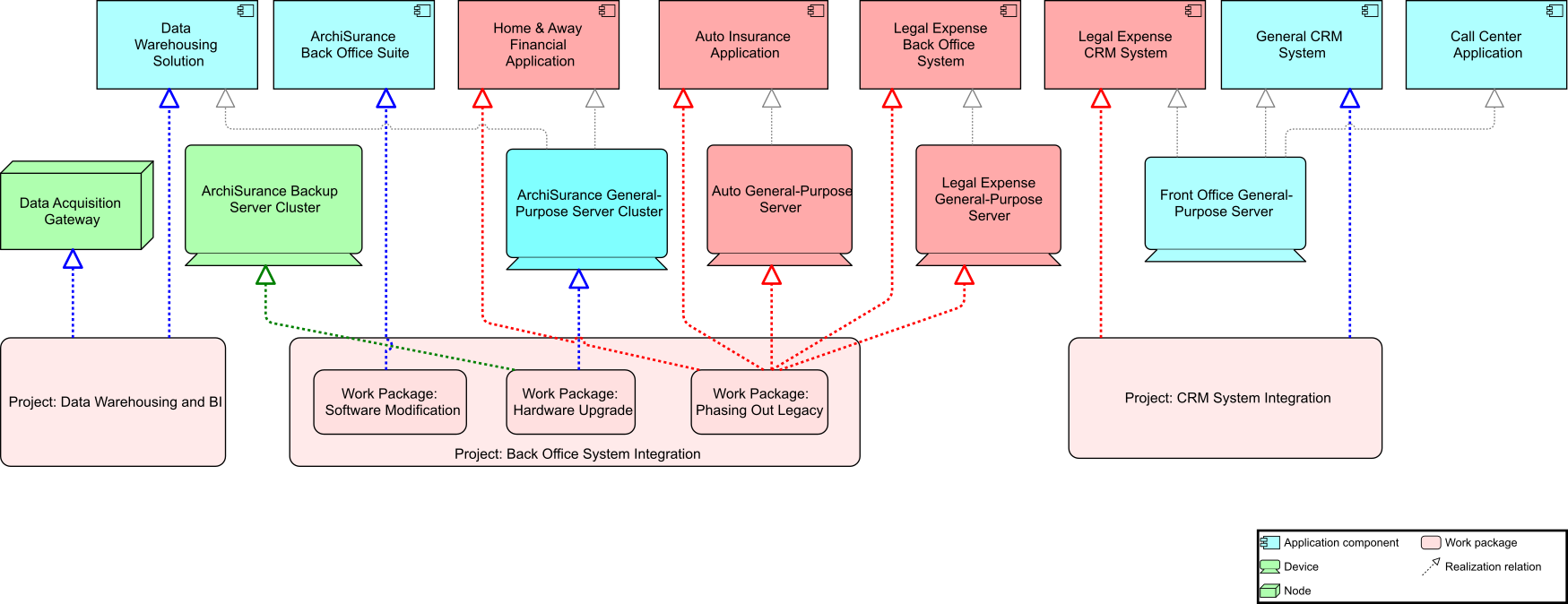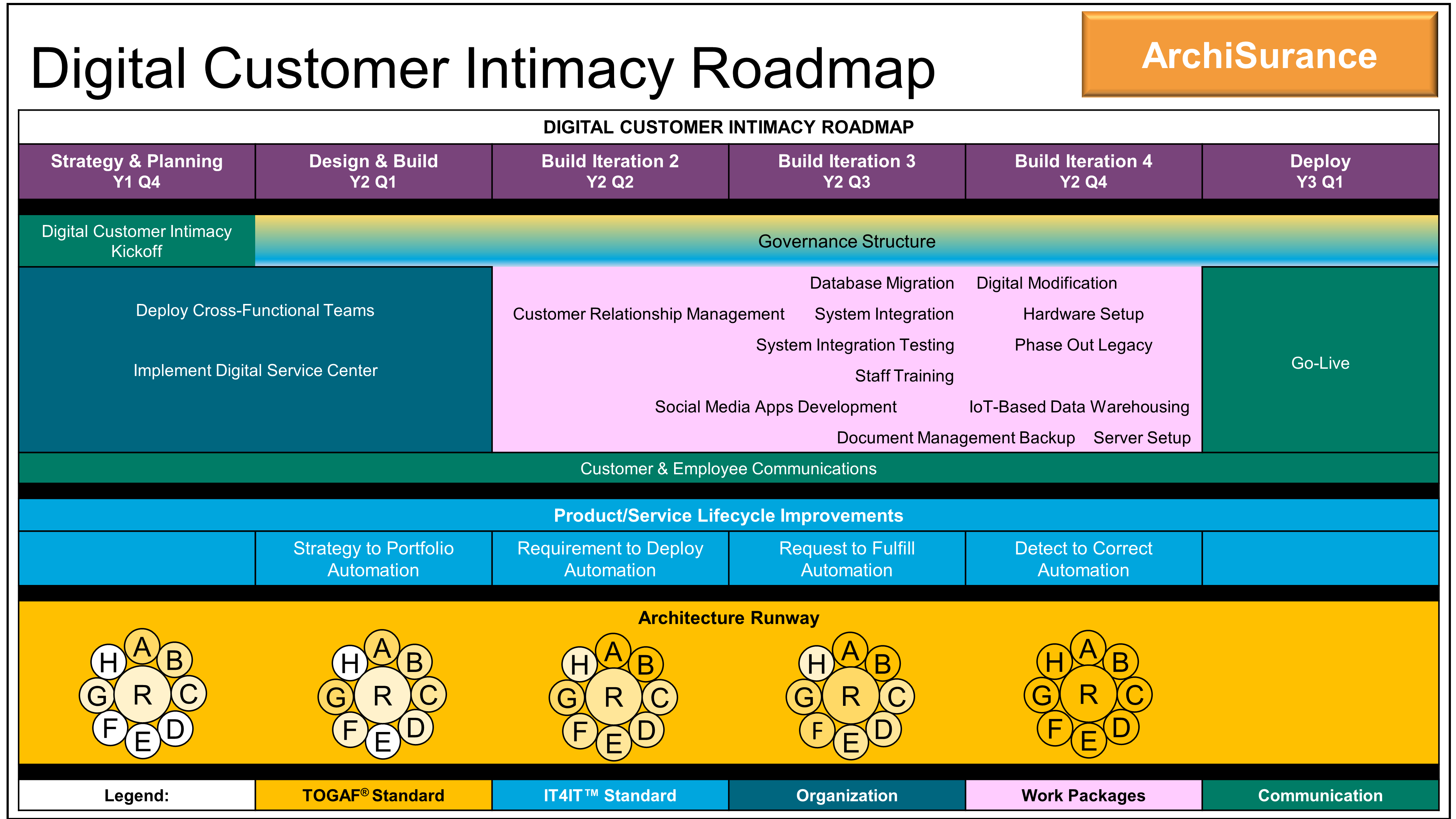Bonus Section E: Opportunities & Solutions and Migration Planning
E.1 Transition Architecture
Meeting: Digital Customer Intimacy Enterprise Architecture Team for the Opportunities & Solutions and Migration Planning
Date: October 22
Present: Kathleen Stone (KS), Carl Highfield (CH), Nick Ross (NR), Terri Nichols (TN), Rakesh Gupta (RG), Greg Morrison (GM), Philip Potter (PP), Jamar Johnson (JJ), Chris Keller (CK)
CH starts by saying that after the work group has been meeting twice a week for two weeks, he is pleased with the format the team came up with for representing the roadmap. An architect can easily trace the opportunities back to the architecture transitions, but it is also easy for non-architects to follow.
CH continues by showing a migration viewpoint (Migration View). It involves models and concepts that can be used for specifying the transition from an existing architecture to a desired architecture. Specifically, it shows an example for the current scenario. Our IT department does not have sufficient resources to carry out the standardization of the back office systems and the integration of the CRM systems in parallel. One Transition Architecture therefore replaces two CRM systems with one, but with separate back office systems. Another has a single back office suite but two CRM applications. After that, the data warehousing and IoT solutions will be implemented.

E.2 Implementation Work Packages
CH continues by saying that Transition Architectures enable the planning of implementation projects such as “CRM System Integration” and “Back Office System Integration”.
The sequence of these projects depends on which of the Transition Architectures is selected. We used a TOGAF Project Context diagram (TOGAF Project Context Diagram, expressed in the ArchiMate Language) to show this.
This type of diagram shows the scope of a work package to be implemented as part of a broader transformation roadmap. It links a work package to the organizations, functions, services, processes, applications, data, and technology that will be added, removed, or impacted by the project.

E.3 Digital Customer Intimacy Roadmap
CH finishes his presentation by showing a draft roadmap (Roadmap for Digital Customer Intimacy). He says it may change a little as we get it out for review, but we do have the architecture phases and development iterations defined. The work has been accelerated and informed by both the TOGAF Standard (shown in yellow) and the IT4IT Standard (shown in blue), which also supported us in doing some automations. The kickoff and go-live are highlighted in green, the work packages that we defined as part of the architecture are plotted in pink, and some additional activities identified as part of the organization map are in gray.

That is a wrap on the Opportunities & Solutions and Migration transition plan for the Digital Customer Intimacy strategic theme. As shown, we have lots of initiatives for our first Digital Transformation. Some of the initiatives, like the product/service lifecycle improvements and the application rationalization, are foundational so the next digital initiative will go much faster.
CH praises the team. Excellent teamwork on all of the architecture domains, saying he really thinks we have a great plan and plenty of runway for the DevOps team.